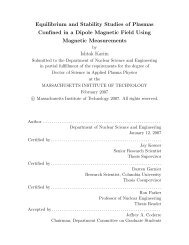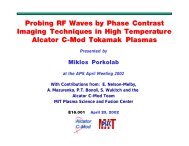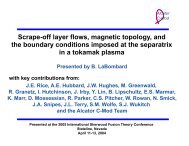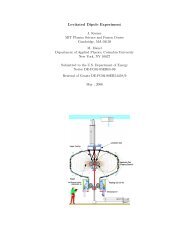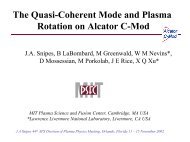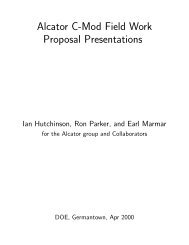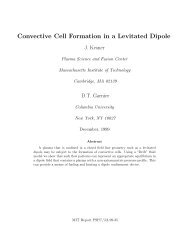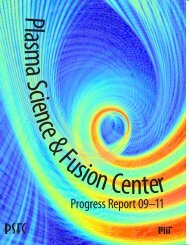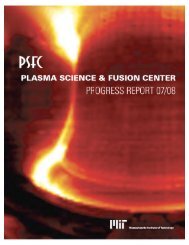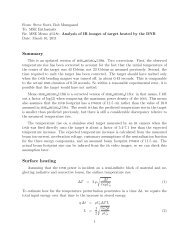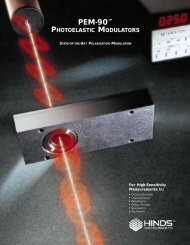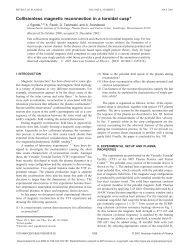Helium Catalyzed DD Fusion in a Levitated Dipole - Plasma Science ...
Helium Catalyzed DD Fusion in a Levitated Dipole - Plasma Science ...
Helium Catalyzed DD Fusion in a Levitated Dipole - Plasma Science ...
Create successful ePaper yourself
Turn your PDF publications into a flip-book with our unique Google optimized e-Paper software.
quirement that a massive blanket and shield must surround the fus<strong>in</strong>g D-T<br />
plasma and be <strong>in</strong>ternal to the superconduct<strong>in</strong>g toroidal field coils.<br />
The D- 3 He reaction elim<strong>in</strong>ates most of the energetic neutron generation.<br />
The use of a dipole for burn<strong>in</strong>g D- 3 He as both a power source [3] and for<br />
propulsion [15] has been exam<strong>in</strong>ed. However, as with tritium, 3 He is not<br />
abundant on the earth. It has been po<strong>in</strong>ted out that it can be m<strong>in</strong>ed on the<br />
moon [13] or on a longer time scale be obta<strong>in</strong>ed from Jupiter [14] but develop<strong>in</strong>g<br />
the required technology for non-terrestrial m<strong>in</strong><strong>in</strong>g presents a daunt<strong>in</strong>g<br />
task.<br />
The D-D reaction is perhaps the most <strong>in</strong>terest<strong>in</strong>g from the po<strong>in</strong>t of view<br />
of elim<strong>in</strong>at<strong>in</strong>g both the tritium and the energetic neutron problems. However<br />
the relatively small fusion cross section has made this approach problematical.<br />
A direct consequence of the low reactivity is that the buildup of ash <strong>in</strong><br />
the fus<strong>in</strong>g plasma can preclude ignition <strong>in</strong> a tokamak-like device [1].<br />
In this study we show that a levitated dipole device may be ideally suited<br />
for a D-D based fusion power source. Section 2 reviews fusion reaction considerations<br />
and dipole physics. In Sec. 3 we present as a conceptual dipole<br />
configuration that can serve as an example of the plasma and plant parameters<br />
considered. Section 4 presents the conceptual configuration for a small<br />
D-T based ignition experiment that might serve as a crucial test of the approach<br />
and Sec. 5 presents a discussion of this approach. Conclusions are<br />
presented <strong>in</strong> Sec. 6.<br />
2 D-D <strong>Fusion</strong><br />
The most important reactions for controlled nuclear fusion are as follows:<br />
D + T → 4 He(3.5 MeV ) + n(14.1 MeV )<br />
D + 3 He → 4 He(3.6 MeV ) + p(14.7 MeV )<br />
D + D 50%<br />
−→ 3 He(0.82 MeV ) + n(2.45 MeV )<br />
D + D 50%<br />
−→ T (1.01 MeV ) + p(3.02 MeV ) (1)<br />
4



